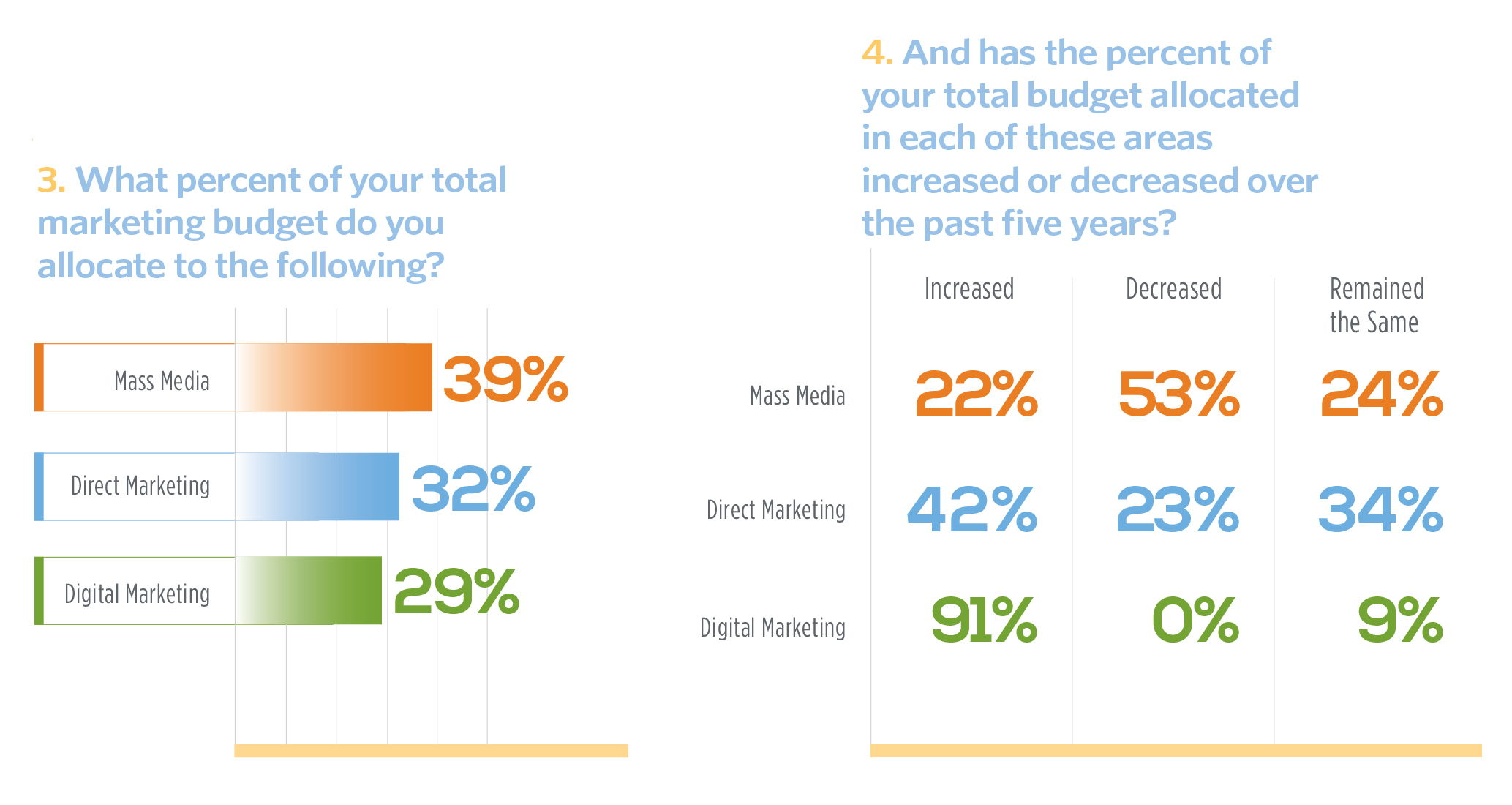Our annual survey of financial services marketers confirmed a trend that’s a surprise to no one: Marketers are shifting away from mass media and investing more heavily in digital marketing. And direct marketing remains a valuable marketing channel for many.
Fifty-three percent of bank and credit union respondents say they’re decreasing their budget allocated to mass media. The reasons are readily apparent, given recent trends: Mass media is often way too broad for results-driven marketing plans, and remains very challenging to measure.
Direct marketing continues to grow in popularity for the same reasons mass media spending is decreasing. Direct marketing initiatives are easy to segment, target and measure. With limited budgets and a need to continually demonstrate results, marketers are relying on tactics and channels they can readily measure.
Of course, digital marketing is where marketing spend is moving. In fact, 91 percent of our respondents are increasing their digital budgets. It was once believed that Gen X and Gen Y were the drivers behind digital spending, but we now know that consumers of all ages use digital channels.
So given those trends, how is the marketing channels budget pie being divvied up? It’s actually a pretty even split: Mass media is still in the lead (but for how long?) with 39 percent of marketing budgets, while direct marketing takes 32 percent and digital marketing 29 percent.
Given the limitations of mass media and the clear advantages of digital and direct marketing, expect to see those numbers reversed in the very near future, as financial services marketers go where the prospects are.
Caution: High Expectations Ahead
As consumers of all ages migrate to digital and mobile channels, financial institutions are shuffling their marketing priorities to keep pace. Digital marketing spend is trending up while mass media declines. No surprise there. But direct marketing remains a viable channel in the overall mix. What else did this year’s survey reveal? Read the report to find out.
> Download the full report now




